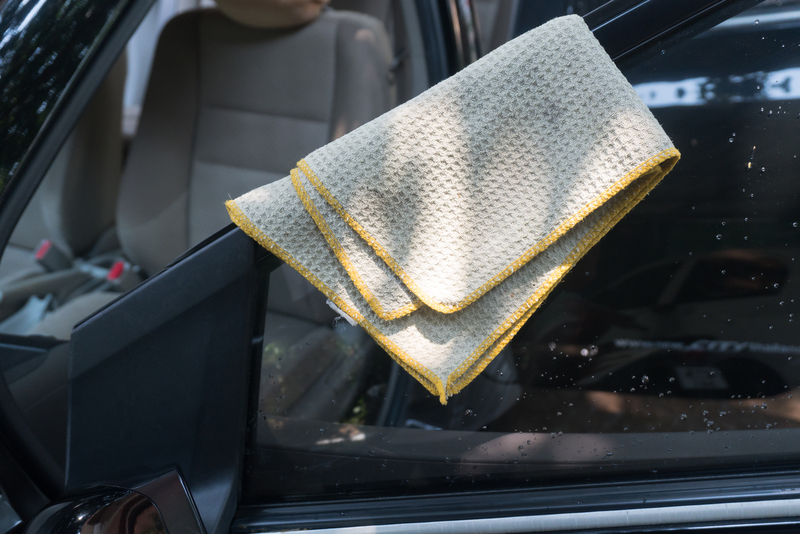Step-by-Step Guide to Clearing Burnt-on Residue Off Your Stovetop
Posted on 26/08/2025
Step-by-Step Guide to Clearing Burnt-on Residue Off Your Stovetop
Is your stovetop marred by stubborn, burnt-on residue that just won't come off, no matter how hard you scrub? Fear not! In this comprehensive guide, we'll walk you through proven techniques and step-by-step instructions for removing baked-on grime, tough stains, and burned food spills from a variety of stovetop types. All you need is some patience, a few common household ingredients, and our easy-to-follow process. Bring back the shine to your kitchen centerpiece and enjoy a sparkling clean stovetop!
Why Burnt-on Stovetop Residue Is So Tough to Remove
Before we dive into the cleaning process, it's important to understand why burnt-on food residue poses such a challenge. When food spills or liquids come into contact with a hot stove, they undergo chemical reactions that bind them tightly to the surface. Over time, multiple spillovers can create layers of scorched grime, making your cooktop look grimy and uninviting.
- High Heat causes sugars and proteins in food to caramelize or carbonize, adhering tenaciously to the stovetop.
- Repeated Use of the stove can bake spills on multiple times, creating tough, multi-layer buildup.
- Oven Cleaner Misuse: Using the wrong cleaner can sometimes spread residue instead of removing it.
_The good news? With the correct methods, you can quickly remove burnt-on gunk from any stove surface._

What You'll Need: Essential Tools & Supplies
Gathering the right tools and cleaners is half the battle. Here's what you'll need for the best results when cleaning burnt-on stains off your stovetop:
- Baking soda - a gentle, effective abrasive
- White vinegar - for its degreasing and stain-lifting power
- Dish soap - to break down grease
- Soft sponges or scrubbing pads (non-abrasive for glass or ceramic tops)
- Plastic scraper - for loosening stuck-on debris
- Microfiber cloths - for drying and polishing
- Paper towels
- Boiling water
- Rubber gloves (to protect your skin)
- Stovetop cleaner (optional, for glass or induction stovetops)
*You may already have most of these supplies in your home!* If you're working with a specific stovetop type (gas, electric, glass, induction), check your manufacturer's recommendations before starting.
Step-by-Step Instructions to Remove Burnt-on Stains from Your Stovetop
Ready to restore your stove to its sparkling best? Follow these detailed steps for eliminating burnt-on residue from stovetops--whether your surface is glass, ceramic, or stainless steel.
Step 1: Allow the stovetop to cool completely
NEVER attempt to clean a hot stove! Wait until the entire surface is cool to the touch. This avoids burns and ensures cleaning agents don't dry out instantly.
Step 2: Remove loose debris and burner grates
Take off any removable parts, such as burner grates or drip pans (for gas and electric stoves), and set them aside to be cleaned separately. Use a paper towel or soft brush to wipe away loose crumbs or charred bits.
Step 3: Soften the burnt-on mess
Loosening stubborn, baked-on spills is key for damage-free cleaning. Pour a kettle of boiling water directly onto the affected areas or soak a towel in boiling water and lay it over the residue for 5-10 minutes. This helps break down the hardened layer without harsh scrubbing.
- Pro tip: For glass stovetops, use a hot, damp microfiber cloth; avoid pouring water directly to prevent thermal shock.
Step 4: Sprinkle baking soda generously
Baking soda acts as a gentle abrasive that won't scratch most stovetop surfaces. Cover stains with a thick layer of baking soda and let it sit for at least 5-10 minutes (or longer for tough stains).
Step 5: Add vinegar for fizzing action
Lightly spray or drizzle white vinegar over the baking soda. The mixture will bubble and foam, lifting grime as the reaction occurs. Allow the fizzing to continue working for another 5-10 minutes.
- For extra-tough residue, cover the area with a damp towel and let it sit for up to 30 minutes.
Step 6: Scrub gently with a non-abrasive pad or sponge
Put on your gloves and use a soft, damp sponge or scrubbing pad to work in a circular motion over the residue. For glass or ceramic cooktops, use only non-abrasive pads to avoid scratches.
- Tip: Don't use steel wool or harsh scouring pads on glass or ceramic!
- For metal or stainless steel stove tops, a plastic scraper can help lift stubborn spots.
Step 7: Scrape off any remaining debris
If residue still clings to the surface, carefully use a plastic scraper held at a 45-degree angle. Gently push under the residue and lift it away. Be patient--stubborn stains may require several rounds of soaking, scrubbing, and scraping.
Step 8: Rinse and wipe thoroughly
Wipe the area with a clean, damp microfiber cloth or sponge to remove any cleaning solution and loosened grime. Finish with a dry microfiber cloth to prevent streaks and restore shine.
Step 9: Clean grates, burners, and knobs separately
While your stovetop dries, soak removable parts (grates, knobs, burner caps, etc.) in equal parts hot water and vinegar with a few drops of dish soap. Use a scrubbing brush to remove built-up residue, rinse thoroughly, and dry before reassembling.
Step 10: Polish and protect for future use
Once everything is dry, you can use a stovetop polish or a bit of vinegar on a cloth to buff your cooktop for extra shine. Regular maintenance using these steps will help prevent future buildup.
- Bonus Tip: For induction or ceramic cooktops, use a manufacturer-approved cleaning solution for extra protection.
Extra Tips for Different Types of Stovetops
Gas Stovetops
- Always check that burners are completely cool and disconnected before cleaning.
- Soak burner heads and caps separately if they are removable.
- Use a toothpick or small brush to clean clogged holes in burners.
Glass & Ceramic Stovetops
- Never use metal scrapers--plastic only!
- Wipe up spills immediately after cooking, if safe, to prevent stains from setting.
- Invest in a specialty stovetop cleaner for a streak-free shine.
Electric Stovetops
- Remove coil burners (if possible) to access spills underneath.
- Check for moisture before reconnecting electrical parts.
- Let all components dry fully before use.
Common Mistakes to Avoid When Cleaning Burnt-on Stovetop Residue
- Scratching the surface with abrasive tools can lead to permanent damage or dullness.
- Using bleach or ammonia products that can discolor or corrode surfaces.
- Letting acidic foods (like tomato sauces) sit for too long--they can permanently etch some stovetops.
- Neglecting to clean up minor spills quickly, allowing them to harden and burn on with use.
How to Prevent Burnt-on Buildup in the Future
A little preventive care goes a long way. Keep your stovetop free from burnt-on residue by following these easy habits:
- Wipe up spills as soon as the surface is cool enough to touch.
- Use baking soda paste (baking soda + water) for routine spot cleaning.
- Clean your stovetop thoroughly once a week, even if there are no visible messes.
- Use pot lids and splatter guards to reduce boil-overs and splashes.
- Double-line drip pans with foil for easy removal and replacement.
Regular attention saves you from hard, time-consuming scrubbing down the road!

Frequently Asked Questions About Clearing Burnt-on Residue Off Your Stovetop
- Can I use a razor scraper on my glass stovetop?
Yes, but only if your manufacturer recommends it. Always use at a shallow angle and never on warm or hot surfaces. - What if baking soda and vinegar don't work?
Try a specialty stovetop cleaner or repeat the process. For extra-tough spots, a paste of hydrogen peroxide and baking soda can offer more cleaning power. - Are commercial cleaners safe for all stovetop types?
No. Always read the label and follow manufacturer guidelines. Avoid abrasive or highly acidic cleaners on delicate surfaces.
Conclusion: Enjoy Your Spotless, Shiny Stovetop
_Eliminating burnt-on residue from your stovetop might seem daunting, but with the right steps and a few household ingredients, you can restore any cooktop to sparkling clean condition._ Regular cleaning and quick spill management are the keys to preventing difficult messes. Bookmark our step-by-step guide and refer back whenever your stovetop needs a deep clean. Happy cooking--and happy cleaning!
Ready to experience a spotless kitchen? Grab your supplies and start transforming your stovetop today!



